Being confident and competent in your physical ability can make a big difference. Research has shown that staying active throughout life depends on this confidence, which can be developed in childhood.
Physical literacy isn’t about sports, games, or being competitive. It’s about the basic skills which form the foundation of movements. As children age, they get better at these basic skills and can use them in game and sport settings while feeling confident.
The three main categories of movements are locomotion, balance, and object manipulation. Within these categories are a wide variety of skills children need to master as they age. Some are more difficult than others, and many build upon each other, for example walking leads to running.
Some examples of the three main physical literacy categories include:
Locomotion
 |
Walking.Using alternating feet to move forward. One foot is always in contact with the ground. |
 |
Running.Using alternating feet to move forward where both feet are off the ground, faster than a walk. |
 |
Jumping.Using both legs to push off the ground to move. Progression sees the arms being used for more power, or jumping from one foot. Jumping can be done for distance or for height. |
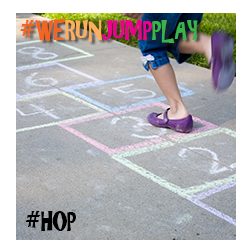 |
Hopping.Using one leg to push of the ground to move. Can be done to hop up and down, or to move in a direction. |
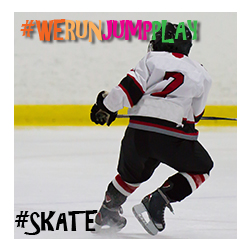 |
Skating.Similar movement skills to walking, but done on ice with skates. As the skill progresses, more one-foot balance is used in combination with pushing forward. |
Balance
 |
One foot balance (stork stand).Supporting the body on one leg. Progress sees the free foot lifted and pressed against the opposite leg with the knee open to the side (see image). |
 |
Yoga poses.A variety of yoga poses require balance skills as they’re held while the body is in an unusual position or stance for a prolonged length of time. |
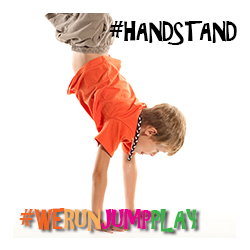 |
Handstands.Supporting the body on both hands with legs extended straight up. |
Object Manipulation
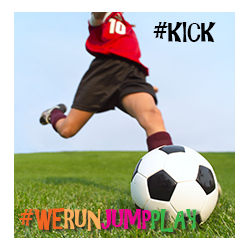 |
Kicking.Using the foot to strike an object to make it move. The object can be stationary or in motion. |
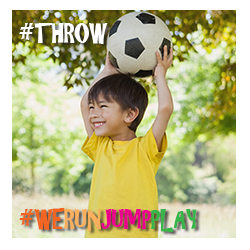 |
Throwing.Using the hands and arms to move an object. The thrower uses momentum and releases the object to propel it away from them. |
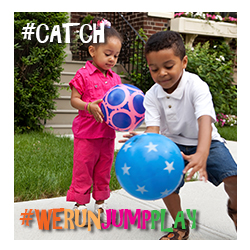 |
Catching.Using the hands and arms to receive an object from the air. When developing this skill, the body may be used to cradle the object. Progression sees the object being controlled using just the hands. In sport, specific gloves may be worn for catching (e.g., softball and baseball). |
 |
Striking.Using an object or a part of the body to propel an object away. For example, in tennis a racquet is used to strike a ball. |
Related Websites
For more information on physical literacy, you can visit the following websites:
This site has a large database of activity ideas which can be organized by age group or skill.
This site covers physical literacy for parents, coaches, and educators. It offers tips for parents to ensure child has good experiences being active at all ages.
Physical & Health Education Canada
This site explains physical literacy, the different movement skills, and education strategies.

